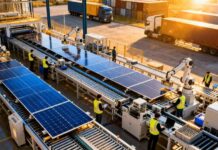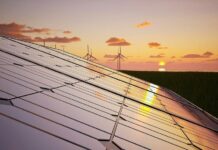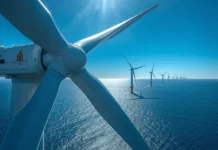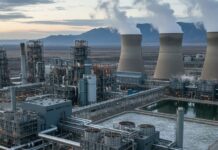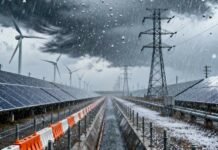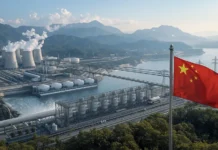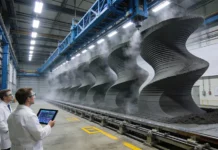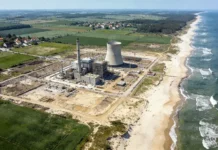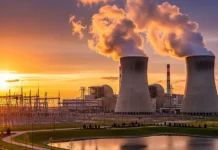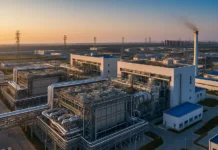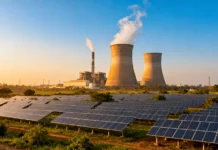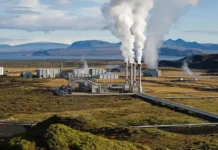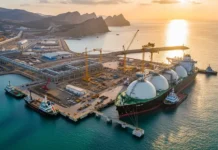It is well to be noted that the Donald Trump administration has gone on to take extraordinary measures in order to reverse the transition when it comes to US renewable energy shift. However, the decarbonization stage is already set.
Wind, and to be more specific solar, has already far outpaced natural gas when it comes to new power generation additions to the nation’s grid strength, and this trend is anticipated to continue as the signs indicate the demand when it comes to renewable energy has nowhere to go but only climb. Let’s discuss the three of them.
Greenhouse gas emissions – more information is available just at a click of the button
Keeping the federal energy policy aside, there are many US states that continue to pursue clean power portfolios.
Global firms that operate within the US also need information on certain sources of electricity that are flowing through the grid so as to fulfill their commitments to clean power. In order to respond to these demand-side forces, leading US grid operator MISO—Midcontinent Independent System Operator—in 2022 went ahead and launched an online greenhouse emissions dashboard, which enabled the users to monitor the carbon intensity of the MISO grid throughout 15 midwestern and southern states. In 2024, the organization enhanced its projections in order to achieve emissions reporting almost in a real-time mode.
It is worth noting that MISO happens to be one of the several regional operators that were established in the 1990s in order to support national grid dependence and resilience. Its territory happens to include the state of Iowa as well as other states having a considerable stake when it comes to wind energy. Under the MISO umbrella come states such as Illinois, Kentucky, Indiana, Arkansas, Louisiana, Minnesota, Missouri, Mississippi, Montana, South Dakota, and Wisconsin, in addition to certain small footholds in Texas too.
Even when President Trump took office in January 2025, MISO went on to improve its emissions reporting by way of launching a new consumed feature to the dashboard in March of the same year, which offers a high level of detail when it comes to carbon emissions at the user end.
The organization noted that increasingly strict regulations, member goals, and customer requirements are indeed driving requests for MISO in order to leverage its functional data so as to offer credible emissions data estimates.
Major drivers when it comes to this kind of interest include going ahead, meeting as well as reporting emission reduction goals by creating novel tariffs in order to support end-use customer demands, increasing visibility when it comes to operational decision-making, and also data to aid investment decisions.
All they said was it might not be done, but it can
Yet another indication when it comes to the permanency of the US energy transition comes from the green hydrogen industry. It is well to be noted that green hydrogen can be produced by way of water and electrolysis systems that run on renewable electricity, but it happens to be much more expensive as compared to conventional hydrogen, which gets extracted from natural gas.
Around the world, industry has indeed struggled to find buyers. However, industry analysts have gone on to identify Texas as one of the markets where green hydrogen can also compete with natural gas, partly because of co-location opportunities when it comes to combining green hydrogen with waste carbon so as to produce synthetic liquid fuels known as electrofuels or E-fuels.
Apparently, the co-location strategy decreases considerable cost when it comes to transporting hydrogen across long distances.
It is worth noting that even the energy producers are also starting to catch up to this consensus of analysts. For instance, in May 2025, Infinium, which happens to be a leading fuel producer, began construction on its new project Roadrunner e-fuels facility, located in West Texas. Apparently, the electricity when it comes to running this facility is going to come from another 150 MW wind farm.
In a press announcement, Infinity wrote that this location is anticipated to become the largest fuels production facility in the world when operational by way of producing 23,000 tonnes every year of sustainable aviation fuel as well as other fuel products. It is well to be noted that the company has already enlisted certain buyers within the aviation sector that are indeed motivated to decrease their dependence when it comes to conventional jet fuel. This includes the likes of American Airlines and IAG, which is the parent company of British Airways as well as Aer Lingus.
This co-location strategy is already at work outside Texas as well. For instance, there is a solar-powered electrolyzer that is going to supply green hydrogen in order to produce ammonium fertilizer domestically, thereby eradicating any long-distance transportation costs. Moreover, Ecolectro, which is a New York startup, has already introduced a containerized and transportable electrolyzer that is designed for on-site usage within multiple hydrogen-dependent sectors that include steelmaking and fertilizers along with e-fuels.
The call is indeed coming from within
Interestingly, President Trump’s American energy dominance plan happens to include three major renewable resources – Geothermal, biomass, and hydropower—under the protective umbrella. All three happen to represent a prominent opportunity in order to decrease the nation’s dependence on fossil energy.
When it comes to biomass, the effect when it comes to that policy protection has almost been immediate. While the Trump administration went on to either delay or even abandon other federally driven renewable energy projects, in February 2025, Montana Renewables, which is a biofuels firm, went on to receive an approval to draw almost $780 million from a $1.44 billion loan guarantee that was issued by the Department of Energy at the time of Joe Biden‘s administration.
Apparently, these funds are going to help the firm to broaden its present facility at Great Falls in Montana, which makes use of biomass to produce sustainable aviation fuel. This kind of drawdown was announced by Calumet, its parent company, which confirmed that the expanded facility is going to be one of the biggest in the world, having a capacity of almost 300 million gallons of sustainable aviation fuel every year.
The point here is that the effect of the energy policy on US hydropower activity by Trump is going to take longer in order to unfold. There are new hydropower dams that are long-term and also capital intensive. However, when it comes to federal funding for upgrades as well as energy efficiency enhancement, they are going to help the hydropower industry so as to maintain their aging facilities and also continue their status as being a major contributor to the US renewable energy shift. It is well to be noted that hydropower comprises 27% of total renewable energy generation within the US, as per the Department of Energy. It can also be used for energy storage within systems that pump out water into an elevated reservoir during times of excess power and, in a way, release them into turbines when the demand for power is high. Significantly, such kinds of facilities comprise the overwhelming majority and are at 96% of renewable energy storage capacity in the US.
It is worth noting that an even more prominent effect is going to be felt within the geothermal industry as the new drilling technology broadens the range of geothermal power plants across new regions in the US. Unlike solar and wind energy, geothermal happens to be available at a constant and steady rate, and that too on a 24/7 basis, by offering gas power plants a compelling source of competition.
During the conclusion of the first term in office of President Trump, the promise of saving coal jobs indeed turned out to be a very empty one. When it comes to his second term, the President has already made enough promises to fossil energy stakeholders, which he may not be able to keep since oil and natural gas also join coal when it comes to the ranks of energy resources that are destined to be marginalized, since renewables are going to become cheaper and more accessible, apart from being even more efficient.




